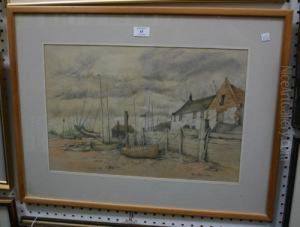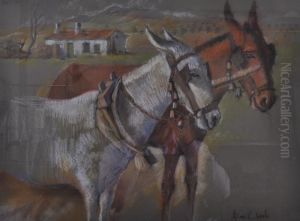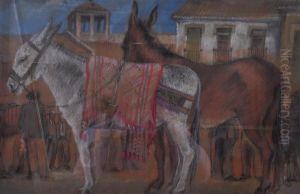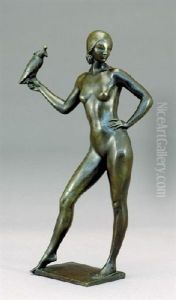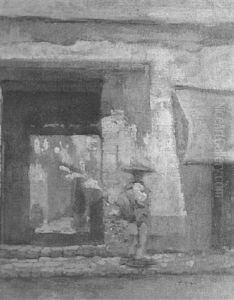Allan Clark Paintings
Allan Clark was an American sculptor born in 1896, known for his work in the early to mid-20th century. Despite the commonality of his name, Clark managed to distinguish himself in the art world through his innovative approaches to sculpture and his dedication to the craft. His career spanned a period of significant change in the art world, from the aftermath of World War I through the Great Depression and into the onset of World War II. These events shaped not only the context in which he worked but also influenced the themes and materials of his art.
Clark's education and early career were marked by traditional training, but he quickly evolved to experiment with both subject matter and materials, including bronze, stone, and wood. He was deeply interested in capturing the human form, with a particular focus on expression and emotion, which set his work apart from some of his contemporaries who were more focused on abstract forms. His sculptures often reflected the social and economic challenges of his times, aiming to provide commentary on the human condition.
Throughout his career, Allan Clark participated in numerous exhibitions and received several commissions for public monuments, which helped to establish his reputation. He was also involved in several artist groups and societies, which was common for artists seeking to promote their work and exchange ideas during this period. Despite his contributions to the art world, Clark's name is not as widely recognized today as some of his contemporaries. This is partly due to the sheer volume of artists working during this period and the changing tastes in art over the subsequent decades.
Clark's work is held in various collections and has been exhibited posthumously in galleries and museums that focus on American art from the early 20th century. His approach to sculpture, with a strong emphasis on realism and human emotion, offers a poignant insight into the era he lived in. Allan Clark's legacy in the art world is that of a dedicated sculptor who sought to capture the essence of human experience through his art. He passed away in 1950, leaving behind a body of work that continues to be studied and appreciated for its depth and craftsmanship.
